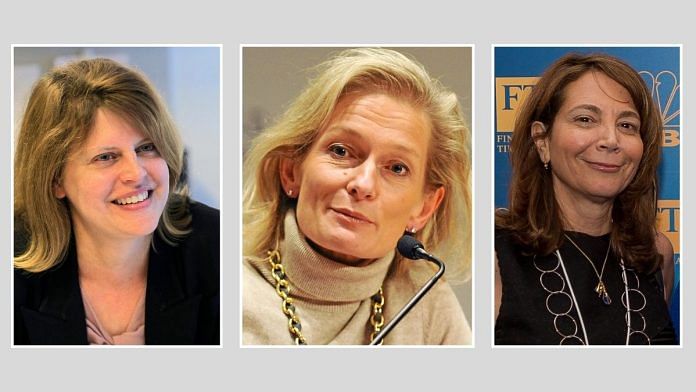New Delhi: At The Wall Street Journal, Emma Tucker is making moves to shake off “unnecessary stuffiness” after she took over as editor-in-chief in February. For the first time in history, the three biggest financial publications, The Wall Street Journal, Financial Times and The Economist, are being fronted by women. This change in tide transcends the financial world.
Many global news outlets and digital publications, instrumental to the dissemination of information and the shaping of popular opinion, have women as their first in command.
In 2015, when Katharine Viner succeeded Alan Rusbridger, she became the first woman ever to helm The Guardian. A few years later (FY 2018-19), the newspaper reported its first operating profit since 1998. And in 2021, Danielle Belton joined HuffPost as what she termed ‘newsroom therapist’. Or as it’s otherwise called, Editor-in-Chief.
The vociferous cry for diversity appears to have made its way into the newsroom, even though a 2023 study by The Reuters Institute for the Study of Journalism highlights that only 22 per cent of the top 180 editors across 240 brands in 12 countries were women.
Also Read: What reports on Indian women’s falling participation in labour force don’t tell you
Emma Tucker
When 56-year-old Tucker took the reins at The Wall Street Journal, the media industry was metamorphosing. She had two options: Either have the 200-year-old newspaper adapt, or let it usher into irrelevancy. WSJ needed to cater to its digital audience, and it needed to practice “distinctive” journalism. Tucker got the ball rolling, finding herself at the forefront of the “audience-first” era of journalism.
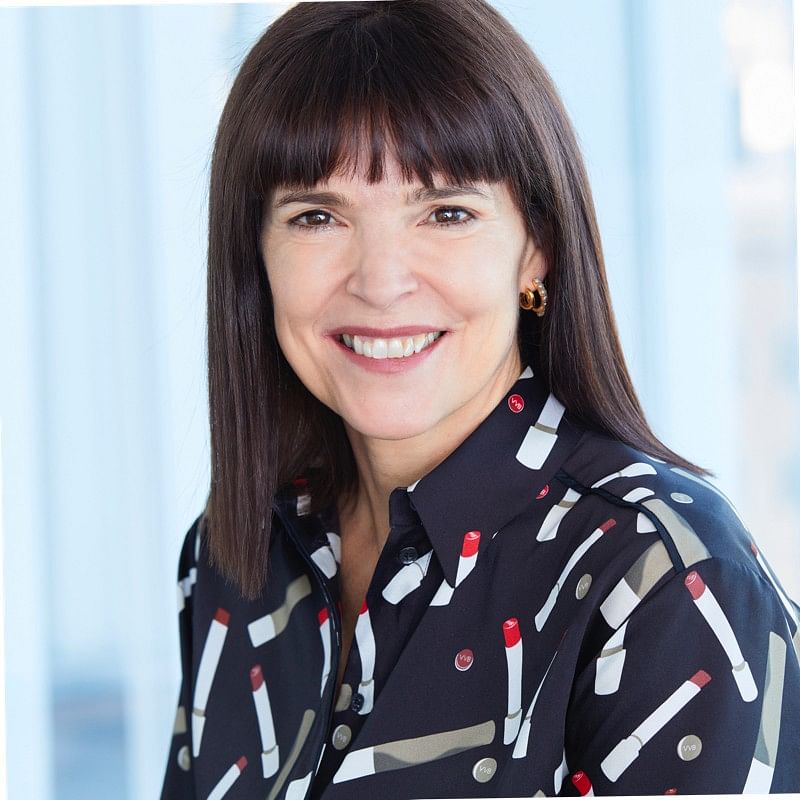
A New York Times profile of Tucker calls her an “unusual choice”— she is British and has previously only worked in British publications. Prior to joining WSJ, she was editor at The Sunday Times. She didn’t have a heavily laden financial background. The last time she worked at a financial publication was 15 years ago.
This isn’t Tucker’s first foray into history-making. When she came on as editor at The Sunday Times, the paper hadn’t had a female editor since 1901. In a podcast, Tucker confessed the secret to her success—unafraid of being different.
“You have to have the confidence to go your own way because Fleet Street can be a real force whereby everyone is looking at each other while thinking of the wider picture and their readers,” she said.
Like most women, Tucker straddles multiple worlds—an often unforgiving profession with the task of raising her children. At work, she delegates, and her children “keep her young,” she says.
Roula Khalaf
Before Roula Khalaf settled down as the first woman editor in Financial Times’ 131-year history, she was its North Africa correspondent and later the foreign editor overseeing the publication’s operations in the Middle East, Africa, and Europe. FT didn’t have war correspondents, and Khalaf was covering a heady combination of politics, culture, and foreign affairs.
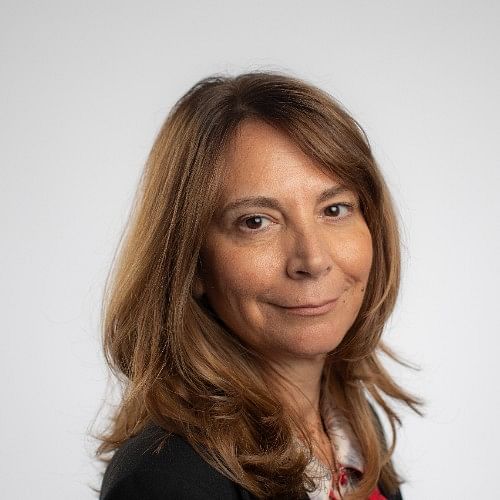
“I was rarely scared. I got scared when my eldest son could read the newspaper and see where the dateline was. Because then I was anxious that he would be anxious about me. I used to tell my family and my parents that I’d be going to Jordan when really I was going to Iraq. I remember very clearly calling my son once, when he said, ‘I know you’re in Baghdad’. Because of course, we got the FT every morning, and my husband was supposed to hide it,” she told Vogue UK.
The same interview bestowed on Khalaf an intriguing title: “Level-headed radical.” She accepts the place Financial Times occupies in global media discourse, but is also firm in her own convictions—“capitalism needs a reset,” she declared to Vogue.
Several transformations are knocking at the door of journalism, arguably the biggest of which is the influence of artificial intelligence (AI). Earlier this year, Khalaf released a statement outlining FT’s view on the matter. “Our journalism will continue to be reported, written, and edited by humans who are the best in their field.”
Even as deputy editor, Khalaf routed the paper differently. FT developed the Janet Bot and the She Said He Said Bot, both of which were built to get the voices of women into the pages of the newspaper. It was in response to a discovery—only 21 per cent of quotes were from women. Both bots were efforts to reconfigure the image of FT, which typically consisted of “men in a suits”.
Also Read: Mewat women have found freedom online. Men can stare, taunt, misuse pics, they won’t sign out
Katharine Viner
In a 2017 speech, two years after she accepted the post, The Guardian’s Editor-in-Chief Katharine Viner spoke of nurturing a platform that was moving in tandem with the changing media landscape. Facts needed to be “sacred”, and diversity had to be the new normal.
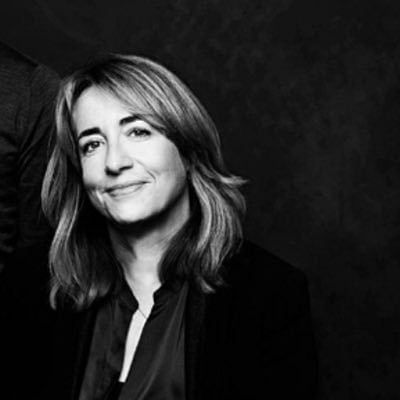
“If people long to create a better world, then we must use our platform to nurture imagination – hopeful ideas, fresh alternatives, belief that the way things are isn’t the way things need to be. We cannot merely criticise the status quo; we must also explore the new ideas that might displace it. We must build hope,” she had said.
Six years later, the newspaper confronted its murky history. The Guardian was founded with money acquired through slavery, and John Edward Taylor, its first editor, was also linked to the slave trade. Viner issued an apology and also reaffirmed the newspaper’s commitment to international reporting. They would be expanding their teams in Africa and South America. In the UK and US, reporters would focus on “the lives and experiences of the people of colour.”
Viner admitted that “representation was poor”, and there weren’t enough black journalists at entry-level positions, or at mid-career positions. The Guardian now wants to combat this, through new funding programmes designed for the assimilation of black journalists.
The newspaper’s ties to slavery were reported extensively by the newspaper. “My hope is that The Guardian’s reckoning with its past will inspire other institutions to do the same,” wrote Viner.
It was straightforward acceptance and accountability. A couple of months later, Viner was hit with another controversy that brought her leadership under the scanner. Following an investigation by The New York Times, The Guardian had to get into apology mode again. One of its ‘star columnists’, Nick Cohen, had made unwanted sexual advances towards seven female staffers. The paper was forced to change its sexual harassment policies — complaints are now managed by an external agency, and not by “newsroom managers”.
Viner’s first job was at Cosmopolitan, a women’s magazine derided for being frivolous and unserious. She joined The Guardian in 1997, donning various hats in the newspaper — heading its US coverage, Australia coverage and its Sunday edition. When she became editor, she became part of a select group of women. There were only four women helming “quality British publications”.
Viner’s stint as the newspaper’s first female editor hasn’t been an easy one—filled with trials, tribulations and moments of reckoning—that too, in a profession that “wasn’t for her”.
“I honestly thought journalism wasn’t for me, I thought it was for men in suits in London,” she said back in 2005. Apart from being a formidable editor, Viner is also a playwright.
My name is Rachel Corrie, jointly edited by Viner and late British actor Alan Rickman, chronicles an American college student’s journey from Washington to the Gaza Strip during the second intifada, where she was killed by Israeli defence forces. It opened in 2005 to widespread acclaim.
Zanny Minton Beddoes
Earlier this year at the World Economic Forum, Zanny Minton Beddoes, editor of The Economist, spoke about being authentic. “It’s really hard to manufacture authenticity,” she said, referring to corporate platitudes, environmental, social, and governance criteria and stakeholder activism. But she may well have been talking about what she’s trying to imbue into the magazine.
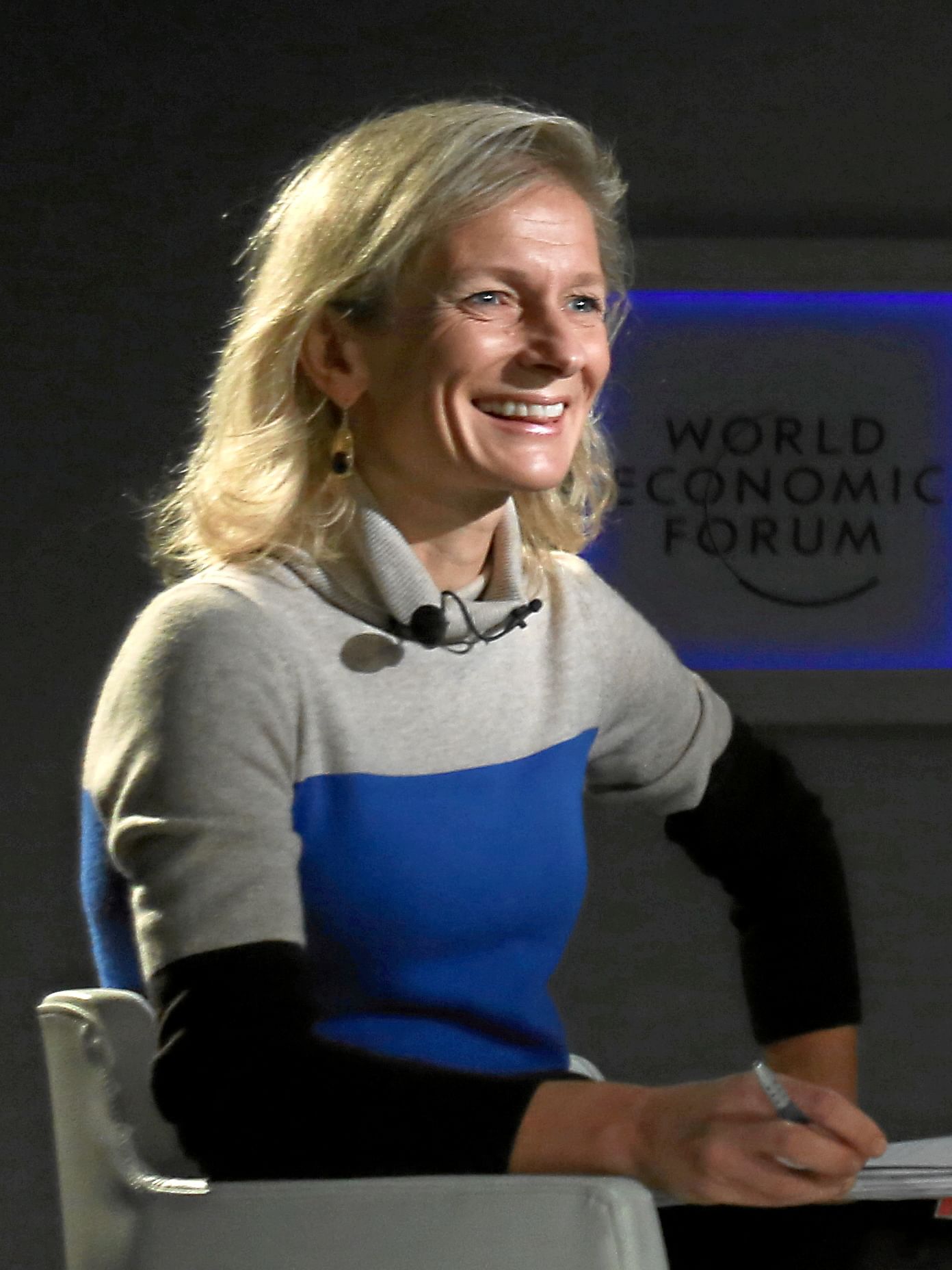
She does it through her candour: “In the world that is your world, The Economist is not as present as it should be. Amongst people who make decisions, we have huge influence. In the kind of media echo chamber, not as much as we should. That’s something I think we need to work on,” she said in an interview with Vanity Fair.
She’s open to controversy, questioning, and is deeply aware of The Economist’s identity.
Much like other editors of globally renowned publications, Minton Beddoes comes with an educational pedigree. She attended Oxford and the Harvard Kennedy School, and somewhere along the line shared an apartment with WSJ editor Emma Tucker. She was appointed as editor in 2015, after a nearly 20-year stint with the magazine. While studying, Minton Beddoes discovered the power of economics, economic policy and the markets.
“You could literally see what happens when markets work,” she told Vanity Fair, talking about a summer internship under noted economist Jeffrey Sachs in 1990. “It was entrepreneurship in action.”
She’s closely acquainted with economics and policy, but as editor, has had to do much more. “My tenure, for good or ill, has been about shifting The Economist into the 21st century,” she said.
Also Read: LPG subsidies, free bus rides give women what they want. That precious thing called leisure
Danielle Belton
HuffPost is a self-described progressive news website, owned by BuzzFeed. It isn’t supposed to be stuffy or take itself too seriously. It’s geared towards millennials. But being in the here and now hasn’t insulated it from the pitfalls of the global media industry. Danielle Belton joined HuffPost as editor in 2021, amid turmoil. The publication had just been sold to Buzzfeed, and laid off 70 staffers. During the transition, there was no editor.

Belton was previously at The Root, an online magazine that covers news surrounding the African-American community. It’s irreverent and tongue-in-cheek, but it also deals with real-world issues—which is what exists in Belton’s writing. How ‘The Real Housewives’ and Reality TV Saved My Life is the title of an article Belton wrote for HuffPost in 2021. It ties the mindlessness of reality television to the precariousness of mental health.
Belton also calls herself “the newsroom therapist”; it’s a role she’s played through her career.
“I used to tell my bosses, ‘You guys should just pay me to be the newsroom therapist. I can just talk to everybody all day and listen to their problems and help them figure out how to solve them and help them with their stories.’ And that’s basically what I’m doing now. I’m the newsroom therapist,” she said in an interview.
At HuffPost, her editorial responsibilities are merged with a healthy workspace. She is sure to do a monthly roundup, wherein she talks about the work she liked and does monthly dinners. She didn’t want to come in and make grand changes, but rather know and understand the newsroom.
During her first year of leadership, HuffPost’s internet traffic grew by 300 per cent.
Sally Buzbee
The Washington Post’s first executive editor, Sally Buzbee, came to the 143-year-old newspaper from The Associated Press, where she had spent “her entire career”, becoming its editor in 2017. According to Vanity Fair, she was still relatively unknown, not part of the usual media circles.
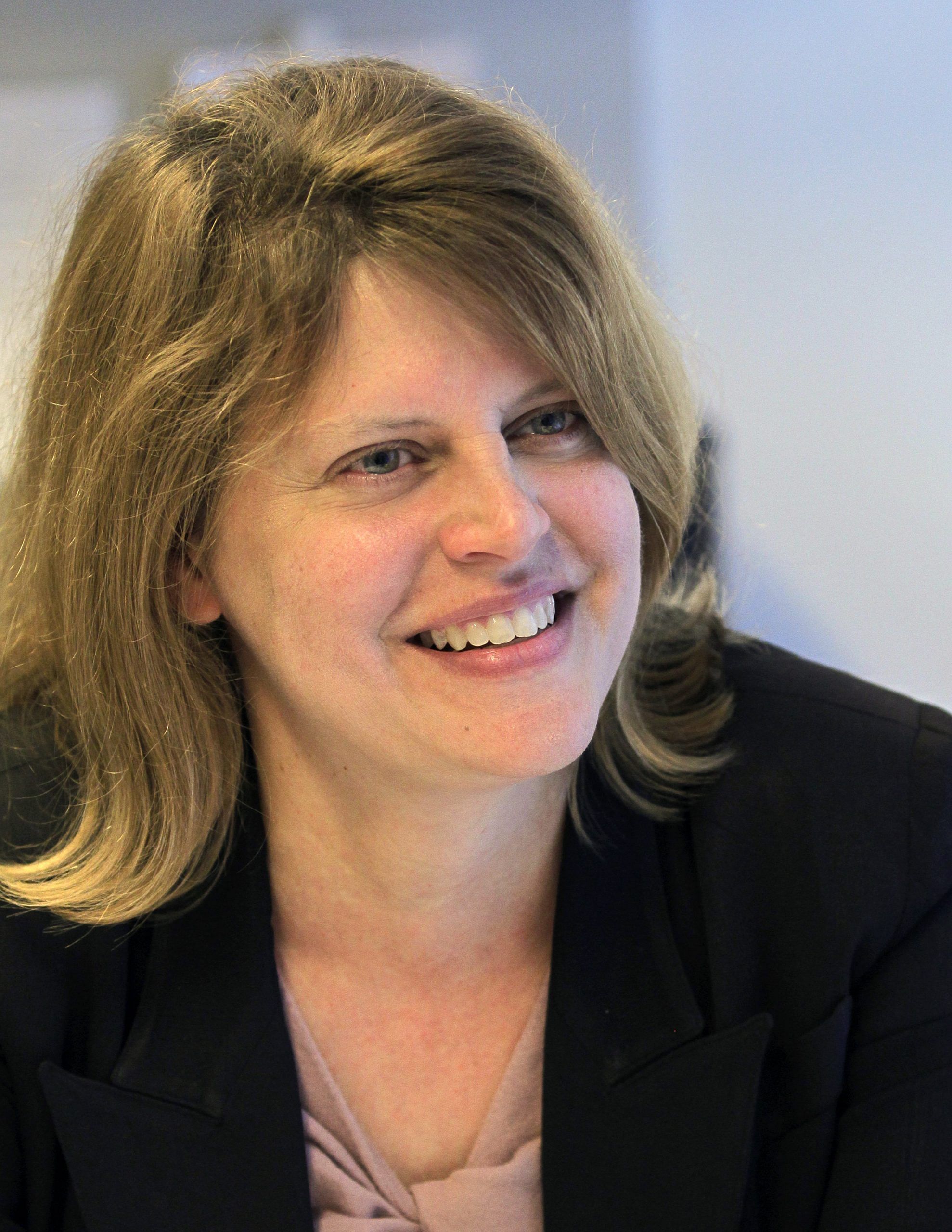
“I’m not a very glamorous person,” said Buzbee. Her quiet public persona was contrary to the newspaper’s reputation—known for editors like Martin Baron who had been elevated to pop cultural phenomenons and their journeys documented in Oscar-winning films.
In 2021, when Buzbee took over, The Washington Post was at an “inflection point”. It had a top-down approach. Her entry marked a new beginning, a radically different newsroom—and the changes have been favourable.
“Sally wants a more inclusive, collaborative environment,” said a senior managing editor at the newspaper. “She will let the silence last a little bit and inevitably someone else will talk,” according to another.
Her tenure hasn’t been an stranger to controversy either, with high-profile firings, chaotic demotions, and social media upsets. “There’s no question that I did this awkwardly,” she said, referring to the demotion of a reporter from the newspaper’s style section. And despite the collaborative newsroom environment, Buzbee is also criticised by Post staffers for being an ineffective communicator.
But some reporters say otherwise. “Most of the best conversations I’ve had in my career have been with Sally because she fully listens and engages,” said a reporter.
Alessandra Galloni
As editor-in-chief of Reuters, Italian journalist Alessandra Galloni is responsible for handling a cross-border newsroom—2,500 journalists and 600 photojournalists in 200 locations across the world. It’s no mean feat, and similar to Buzbee, she was appointed following the retirement of a stalwart in 2021.
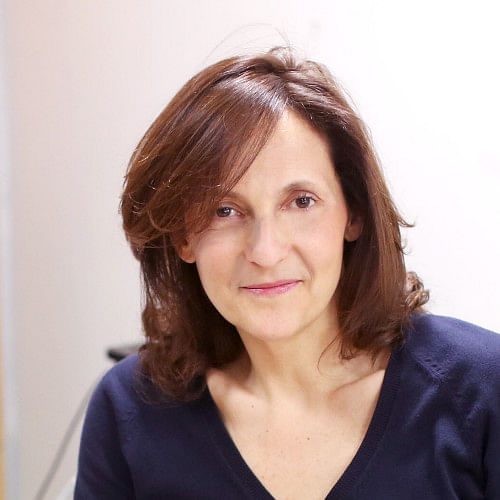
Galloni has been at Reuters since 2013, after spending 13 years at The Wall Street Journal. With her elevation, Galloni now has a dual responsibility—as editor and entrepreneur.
When she was appointed to the top role, a New York Times article wrote that her responsibilities would include “looking for ways to cut costs and raise revenue at the news agency”.
Earlier this year, Galloni announced Reuters’ third revenue stream—reaching consumers directly, a deviation from the news agency model. She attributed this to Reuters’ ‘glocality’: global views and local expertise.
“There’s a great and growing responsibility for news organisations that want to cover the world to support local journalists who are a crucial part of foreign reporting,” she said.
After the death of globally recognised Indian Reuters photojournalist Danish Siddiqui at the hands of the Taliban in 2021, Galloni was once again confronted with the dangers as well as the scale of the operation she runs.
“I am reiterating my call to the Israeli authorities who have said they are investigating to conduct a swift, thorough and transparent probe into what happened,” said Galloni, in response to the death of Reuters photojournalist Issam Abdallah, ostensibly killed by a shell that “originated in Israel” while he was covering cross-border firing between Israel and Lebanon.
(Edited by Theres Sudeep)



